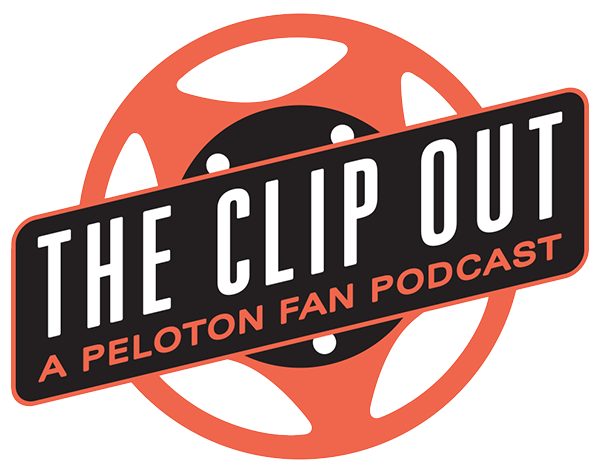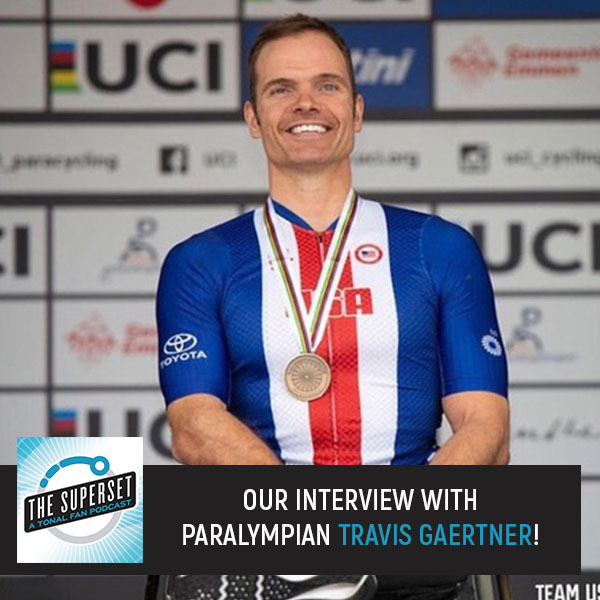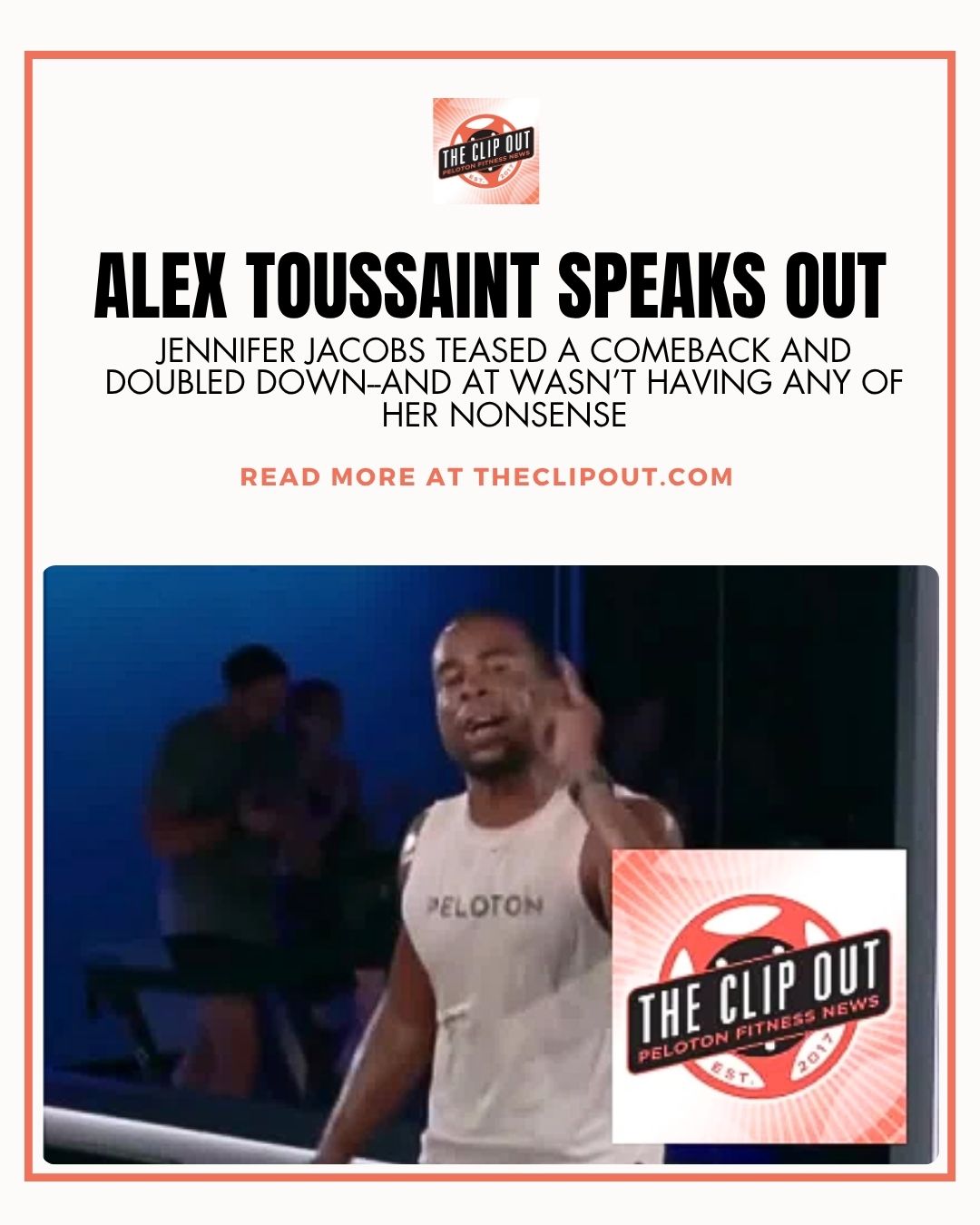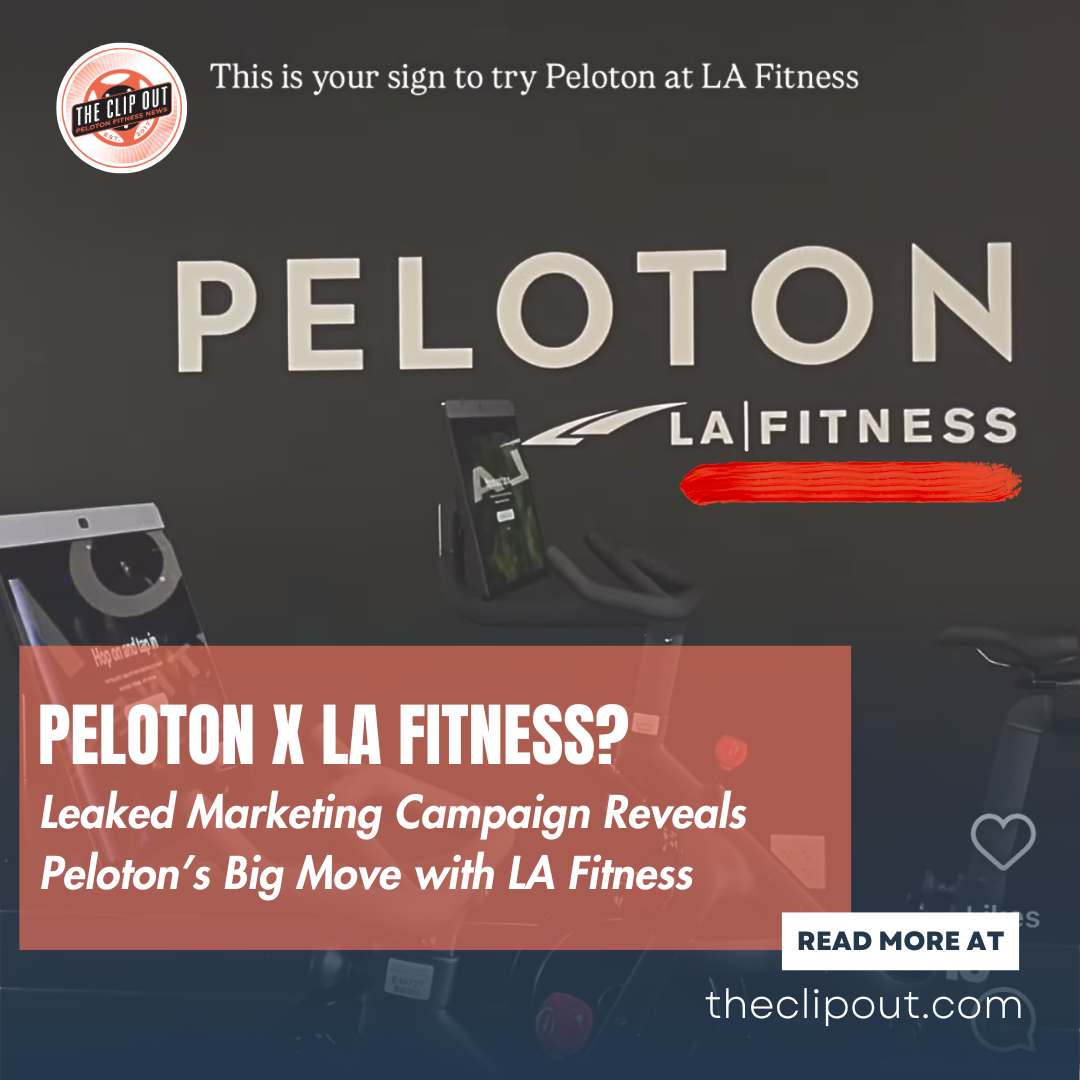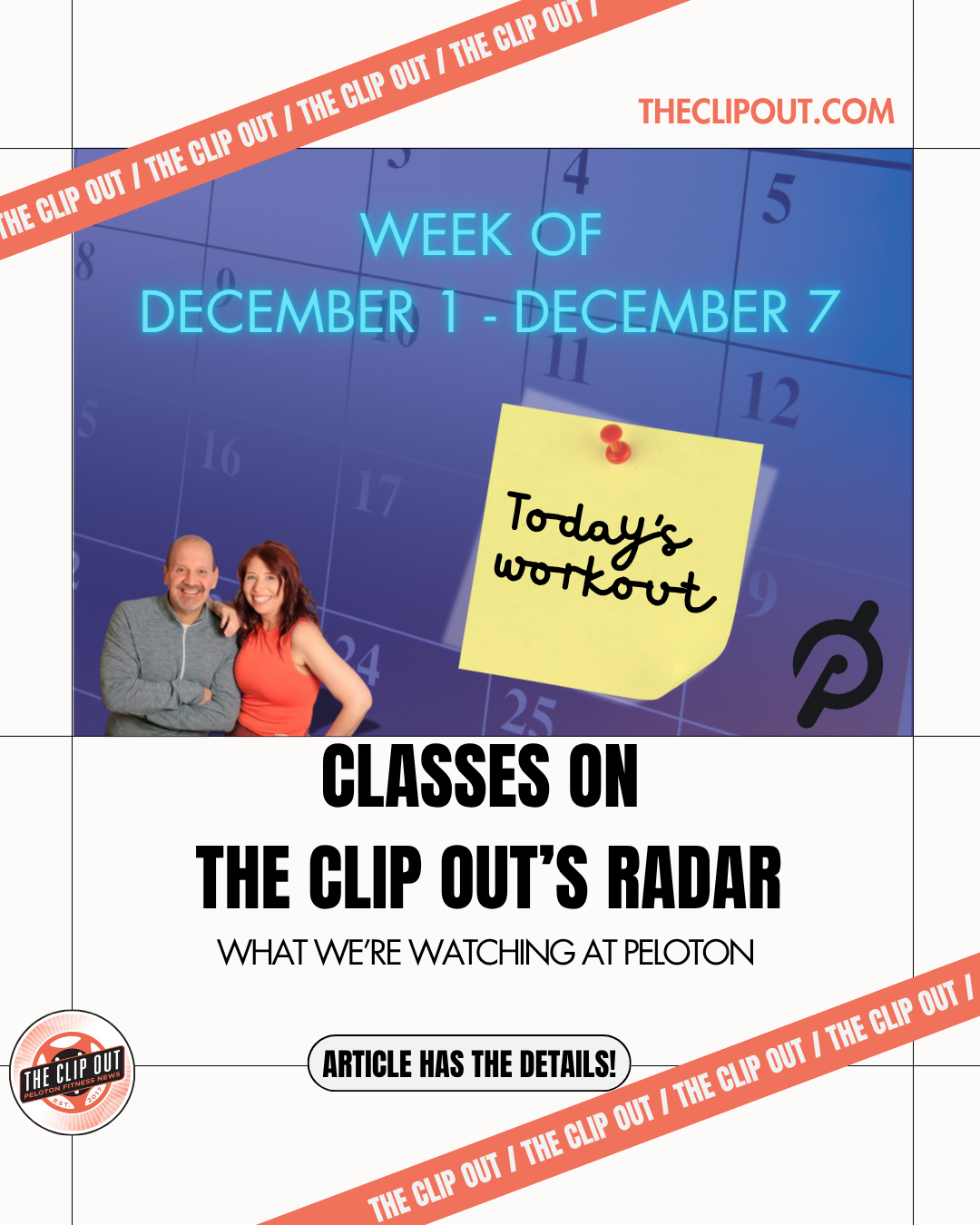Our Interview with Paralympian Travis Gaertner!
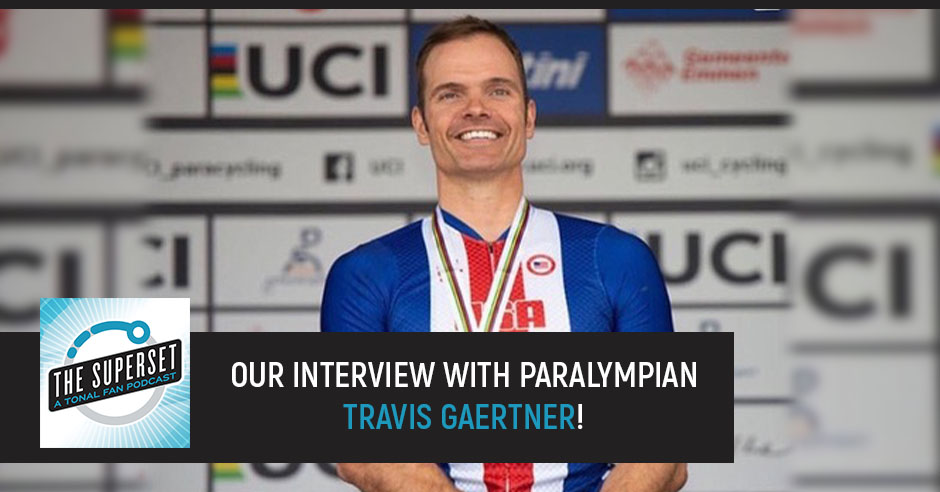
Allison Tibbs has an inspiring post about “showing up.”
New content including Fit And Focused, Lean Muscle Mastery, Power Explosion, and more!
A Tonal was spotted on HGTV’s No Demo Reno.
Tonal welcomes a new Community Coordinator – Dia Woodbury.
The documentary Coach Pablo is involved with got funded.
Coach Pablo has tips for making it through this month’s challenge.
Adam Pruett is this month’s Tonal Transformation having used his Tonal to avoid surgery.
Michelle Kenyon Young had an interesting post about the importance of form.
All this plus our interview with Travis Gaertner!
—
Watch the episode here:
Listen to the podcast here:
Our Interview with Paralympian Travis Gaertner!
This is one year of episodes of The Superset. Happy anniversary.
How about that? That went by quick. In honor of our one year anniversary, what do you have in store for people for this episode?
We are going to talk all about the new content that Tonal has been putting out. There is a ton of new content. We’re going to talk about what’s going on with the Tonal team because we have some new additions to the Tonal team. In the news, there’s some stuff about the coaches. We’ll have to talk about that as well.
Before we get to all that shameless plugs, don’t forget we’re available on Apple Podcasts, Spotify, Google Podcasts. Wherever you find a podcast, you can find us. While you’re there, be sure and follow us so you’ll never miss an episode. Check out our Facebook page, Facebook.com/supersetpodcast. While you’re there, like the page and join the group. You can watch all these on YouTube if you want it. You can listen to them but you could also watch them on our YouTube channel, which is YouTube.com/theclipout because that’s the name of our other podcasts where it all lives under that umbrella. Swing by there and you can watch this now in color. There’s all that. Let’s dig in. Shall we?
We shall.
—
Allison Tibbs had a post for people.
It really touched me. This is from a few weeks ago but I saved it because I wanted to mention it here. Alison talked about how she was wrapping up that day for filming new content for the Tonal, and that she had been going through this process where she reviewed her past workout performances. She was watching them and then she had to go through workshops with producers and doing research on how she could show up with more of her authenticity. She talked about how it’s not always fun or easy but it’s necessary if you’re prioritizing growth, and then ask the question, “How will you show up today?”
That struck me because when you’re the person watching these instructors, whether it be on Tonal or any other platform, you see the finished product and you don’t see the blood, sweat and tears that goes into that. Specifically, you don’t see the vulnerability that goes into it. It’s not something that I would have ever recognized were it not for the fact that we do a podcast. It’s like you put yourself out there and you never know what kind of feedback you’re going to get. Sometimes it’s great and sometimes it’s not. My point being is that it really struck a chord with me because that is something that you have to do. You have to look at how you’re doing in order to grow. I love that she put that level of transparency out there. It spoke to me. I just wanted to make sure that people got a chance to see that.
You have to be your own benchmark when you define what it is to be your best. Share on XI bet so many people think that they just walk in and start saying, “Lift this, bend here, touch that.” It’s not that simple.
—
We say it every week but tons of new contents. They just keep pumping out the content for you.
There are some exciting ones to talk about because they’re special. One that I want to make sure I mentioned is a brand new program with Coach Francis. Why do I want to mention this? Specifically, I want to mention this because it is her first strength program on Tonal. Coach Francis has taught other classes, but this is her first program so that is very exciting. It’s called Fit and Focused. It’s a beginner, three times a week for four weeks. Make sure that you get a chance to check that out. We also have another great class. This one is with Coach Liz, Posture Checkup. This is great for people like myself that sit at my desk all day. They’ve been focusing a lot on this. It goes into mobility and having posture checkups. I love this. It’s very simple things you can do.
It’s not just sitting at your desk. If you think about it so many people are working from home right now. It’s even worse than sitting at a desk because you’re probably sitting on your couch with your laptop. You’re hunched over even more.
That’s a good point. There’s also a new Intro to Barre Class with Coach Gabby. That was a few weeks ago. There have been so many new things added. There is another new program, Lean Muscle Mastery. This one is with Coach Jared. That is super exciting. This is also a beginner full-body, three times a week for four weeks. This is all about getting lean. Tom, when you’re done with 4 Weeks to Fat Loss too, this can be your next one. There’s the new yoga. This one is called Cheerful Flow with Coach Nikki. I love that. It just makes me want to do that because it says cheerful and I can always use some cheering up. There’s new kickboxing. This one is called Knockout Stress with Coach Gabby. It’s an advanced 30-minute, full-body, kickboxing class. It sounds awesome.
Another new barre class, Leg Day Barre with Coach Francis. You’re not done yet. There’s more. Another new program. It’s a new live class. This one’s a little bit different because it’s a series of classes that Coach Nicolette did and they’re all the beta ones. She works out with you. They’re called Power Explosion. There’s a full body, an upper body, a lower body and a core. What’s different about these is that you can take them individually. You can mix and match them and make your own program. You could do these classes. There are four of them. You could do them four times in one week. You can do that four times in a row and you just got a program. That’s a great way to look at that, or you could just take them one at a time because they’re all awesome and so is Coach Nicolette. We have another yoga class, Body Balance with Coach Francis. This one is an advance full-body and it’s 42 minutes. How about that?
That’s a lot.
—
It’s not quite a celebrity using a Tonal, but Tonal popped up randomly on HGTV.
Kate Telge posted about this and she noticed this. I guess she watches a lot of HGTV. That’s her confession, but she said that this was on No Demo Reno. Up pops a Tonal. How cool is that to work for Tonal and then see this amazing machine up on a show that you’re watching.
That’s cool. If you watch No demo Reno, keep an eye out. You might see a Tonal.
—
The Tonal team is expanding. 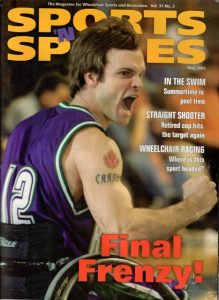
It is and I am super excited about this particular expansion. There is a brand new person in our Tonal community, Dia Woodbury. She is the new community coordinator. She works very closely with Kate who has been our community manager. This whole time that we’ve been part of Tonal. Kate’s been running the whole thing and now she’s got some help. Dia has a background in broadcast TV. She’s also a mom to a precious one-year-old baby. She is the best friend that you would want planning your bachelorette party or Kate. In the meantime, she’s going to be helping coordinate community events. She will be assisting the community and finding information that you need to be successful on Tonal. She will be running some of the day-to-day operations of the community. Dia, welcome to the team. Welcome to the community as well.
—
We talked a few weeks back about Baloney, a queer male burlesque documentary. We talked about it because Coach Pablo was involved.
He was a part of it. They were raising money to make this a reality.
Funding is up and off the ground.
It is official. It is happening. Frameline has published the documentary on their schedule and Coach Pablo gets to be part of it. How exciting is that? If you are watching this, you would see that Coach Pablo had posted this on his personal page. You can go in and read the write-up about the entire project. I am so excited that this is happening. I can’t wait to watch this when it is done. It’s going to be amazing. Congratulation.
I also see here that there’s a documentary about the history of queer comics and we all know what a comic nerd I am. Just keep an eye out for that.
There are going to be a lot of documentaries in your future. You love documentaries. It was right up your alley. Congrats to Coach Pablo and the whole team.
—
Speaking of Coach Pablo, he had some tips for getting through this month’s challenge.
This particular program is full of exercises that are meant to exhaust you. That’s the whole point of them. Coach Pablo was getting a lot of feedback that people were like, “I’m getting exhausted on the second exercise.” They were getting to the point of exhaustion on their muscles early on in the program, which was not the intent. Coach Pablo was talking about the best way to do this is to turn on the advanced mode. It’s the burnout mode that you want for this. What burnout mode will allow you to do is as you’re struggling, it will lower the weight, one pound at a time. He highly encouraged people that were struggling to use that. I wanted to make sure that we use this platform to tell people as well. I’m sure he reached a lot of people. He probably reached more people than we did, but I still want to make sure that they get the word out.
Cast the net wide.
Get your mind focused on where you want to be. Share on XThat is an important piece of advice because you want everyone to be successful and finish their workouts.
Tonal continued their Tonal Transformation series. This time, spotlighting Adam Pruett.
Adam Pruett tore his ACL during a skiing accident. He thought that he was in store for a life-altering surgery. He connected with an expert, a physical therapist who suggested aggressive physical therapy and strength training for his injury. A couple of weeks later, he gets the Tonal. His installation was complete and it just seemed like fate. Now Tonal became part of his recovery. Not only that, but he was also able to heal his body without surgery, zero surgery. As he has consistently worked out, he has found confidence and he has found joy in strength training for the first time. You can hear his entire story and the Tonal Transformation. Either read the story or make sure you go back and listen to the Instagram live interview that occurred in June. What a fascinating story.
That’s pretty impressive that he avoided surgery. Those are things you typically want to avoid.
—
You wanted to spotlight something that Michelle Kenyon-Young said that struck a chord with you.
Michelle is always posting great information out in the Tonal community. Pretty much anything you read by her is going to be fascinating. She shared that she had this a-ha moment a few weeks ago. She’s been focusing on form in her movements. She’s come a long way with her strength score. She’s gotten stronger. We interviewed her and we got to hear some of that. As she’s been working on the forum, she has realized that when she’s working on the bigger compound movements, the hard ones, she powers through that heavy weight. That means that sometimes the wrong muscles are doing the bulk of the work.
As she’s been focused on, “I’m going to get this form right, “ she’s been trying to think about, “I want to make sure I’m feeling the consistent glute and hamstring engagement in the lower body movements that I’m supposed to do.” She hasn’t been feeling that. She also was struggling with the advanced five by five, when she was doing barbell deadlifts. They were hurting her back at the heavyweight that she was working on. She started having private one-on-one sessions with Coach Nicolette to work on her posture correction. When they met, they worked on Michelle’s deadlift form.
When Coach Nicolette had her work with the barbell at a similar height as the Tonal barbell in a mirror, she saw that her hamstrings weren’t very flexible and her spine wasn’t neutral the way it was supposed to be. Her back was curved and that’s why it was doing all the work during those deadlifts. Therefore, Coach Nicolette said, “Based on your body, you need to raise the Tonal arms up in height by one click,” which when they did, fixed her form. I wanted to highlight this for a couple of reasons. One is how important form is and two, when you are struggling with a move, do not be shy about reaching out to these instructors. You might need to do a couple of one-on-one and you might need to pay a little extra, but look at what that can do for you.
Also, the recommended height for the arms isn’t written in stone. Not everybody’s the same height. I’ve done that sometimes when they go all the way at the top and you’re supposed to reach down and I’m like, “I’m too short. I can’t reach that.” I go one click below all the way and now I can reach it. I’ve made those adjustments instinctively.
It makes you think about which ones you’re not doing instinctively that you could be doing to improve and you don’t even know it’s an option. I wanted to make sure I highlight that because it was an important message. Thank you to Michelle for sharing that.
—
Joining us is Travis Gaertner. Travis, how’s it going?
It’s fantastic. It’s Friday and sunny in Seattle, so I can’t complain.
That’s awesome. You don’t get a lot of sunny days in Seattle, do you?
In the summer, we do but we don’t call summer until after the fourth of July, so we still get a lot of clouds which is a good day.
The summer is from July 4th to July 9th.
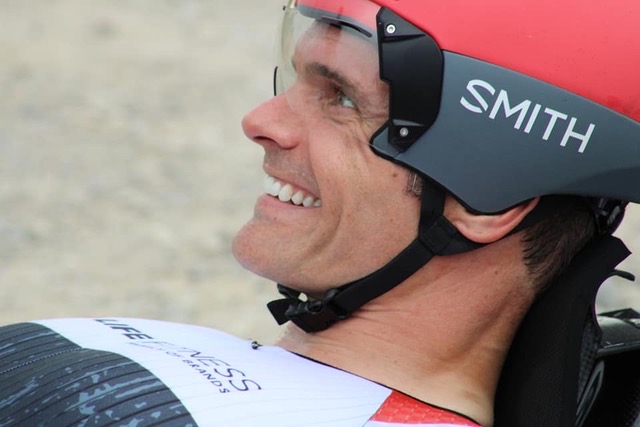
Summers are fantastic here which is like a day or two.
Just a 36-hour window.
I would like to hear how you first came across Tonal in your adventures and where in the timeline was that?
One of my sponsors, I was actually at dinner with their CEO at the time. He knew about Tonal and some of the starters. He said, “For your training, Travis, Tonal would be perfect.” I said, “That is interesting. Tell me about Tonal.” This was years ago. The reason he said that is because I’m missing my lower legs. I was born a congenital double amputee. I can still get up, move around, get on benches, but I have a lot less balanced than a normal person, who can use their lower legs to stabilize themselves for all different types of exercises. Frankly, Tonal was perfect.
I can get into new positions with Tonal that I couldn’t before. If you think about me lifting up dumbbells without balance. I can actually push more weight in an exercise than I could get to the point to do the exercise. It’s smart buttons. I can get into any position that I need to without any weight. Now I’m doing exercises I couldn’t do before and I’m doing them with more weight. Before I was almost limited by how much I could get into position. That was the first thing.
Just the overall spotter effect of it again without enough balance, I could get myself into trouble if I have too much weight on me. I might be yelling around for somebody in the gym to come and give me a spot. I would often back off a little bit because I didn’t want to be that guy. Tonal with this spotter function was fantastic. He told me what those things and I thought, “Yes. This is something I have to have.” I looked into it more, did some emailing, and the rest is history. There is more to that story, but it’s perfect for me.
To give people a little bit of background, you are a two-time Paralympic gold medalist. Did you tell me that both of those medals were in paracycling?
Both of those are wheelchair basketball Back in the day when I was a little bit younger and able to recover a little more from workouts, I did the Athens 2004 Paralympic games and the Sydney 2000 Paralympic games. I’m trying to go back a third time in a new sport of paracycling this time.
What made you change sports? Was it because you are getting older and it’s a different energy level or was it because you wanted to do a whole new sport?
Have you ever seen wheelchair basketball?
No, I haven’t actually.
There’s a documentary about it, very famous, called Murderball.
That’s pretty intense.
There is a little bit of both there. I retired after Athens in 2004 from international sport. I wanted to focus on my career. I wanted to focus on having a family, but I always stay physically active. One way for me to stay physically active was something like a handcycle. I did, in the summertime, twice a week, just to stay fit. Probably 2016-ish, the competitive bug came back. I had been focusing on my career that was going well. Things with the family are going well. I’m a competitive person. How could I improve myself on the handcycle? I wanted to figure out what would be my best in the handcycle. I figured out that before basketball I’m trying to define what my best was going to be in the handcycling. I said, “Let’s take this one year at a time and see if maybe I could go back to the Paralympics.”
Talking to my wife about it at first and she said, “I thought when we got married you said you were done with all of that.” That was basketball. This is a different sport. Basketball, the team sport required a lot more of your time. You would have to go for 6 to 8 weeks prior to the Paralympics as a team to train. There were often staging camps throughout the year where you were gone for a long period of time. Handcycling takes a lot of time, but as an individual sport, it was easier for me to fit that into my schedule and try and make sure that I could get the training that I need. That is why I transitioned.
There was also a bit of a tie there in that my coach in basketball always told me, “You think better and you are more focused when you are going fast.” They would put me out of a full-court press even when the rest of the team wasn’t. I would be doing the one-man full-court press because the team did better. They were more cohesive when I was moving quickly. The whole idea of speed and handcycling does fit my national persona as well.
Everybody needs to come together to get the right level of support. You can't do it alone. Share on XI have to give kudos to your coach for recognizing that and finding a way to completely make the best use of that. Not everybody would pay attention to that. They would try to conform you to that spot instead. You are preparing for Tokyo. Tell us about that process. What does it look like? I know every country is a little bit different. What do the finals look like for America whenever you are getting ready to go in?
It’s a complicated process. I will try to keep it as simple as I can. In paracycling, there are fifteen different classes of disability. We don’t all compete against everybody. When you have seen one disabled person, you have seen one disabled person. We are all very different. It would be unfair for me to compete against somebody, who is more severely disabled, for example. They classify us and do these different classifications. Some are handcycles, some on a regular bike and some are on with three wheels. To simplify it, they only have seven spots, but there are fifteen classifications. At the extreme, if we had the world champion and all fifteen spots, we can’t all go to the Paralympics. There are only seven spots.
There is going to be a race in Minneapolis where they are going to adjust our times based on a factor that they come up with that equalizes the playing field between our classifications. We are competing against people to make the team that we wouldn’t compete against once we get there because we only compete in our classifications once we get to Tokyo. It’s a rather complicated process. It’s cutthroat and tight given there are only seven spots going.
There was a three-step process. We were in Huntsville, Alabama to start that process. A team was selected from there to go to Belgium. We competed in Belgium. The third step will be in Minneapolis. There will be five spots awarded in Minneapolis based on that all ranking list idea of factorized times. One race to rule them all. It’s going to be an intense day.
How do you not let that get in your head?
That is the question right now. Up until weeks ago, everything was fine, but now I am focused on my mindset because how I define my best is, “I’m my own benchmark.” You have to be your benchmark when you define what it is to be your best. If you start comparing yourself to other people, you don’t have control over that. For example, being born without my lower limbs, if I were to define my best as the ability to run around outside of the neighborhood with all the kids, then I would be very disappointed and a depressed child thinking I couldn’t do anything. My best had to be defined as what I can do, how I can stretch my limits, and how I can figure out how to define how far those limits can be stretched and then perform up against those things.
That whole idea and that mindset is something I cultivated from here as a young child, based on my situation, and I had to apply that going into this race. If I think about all the other people that could make it, which does come into my head, and all that has to happen for me to make it, as you said, that is just too much stress and I’m not going to be focused on what I need to be successful. I know my wattage numbers, what I need to do, and what’s under my control. I’m focused on becoming my own personal best for that race in Minneapolis. When I get to race day, it’s all about what I can do versus how those limits that I have stretched and defined. I was fortunate to learn that lesson early being born without my limbs. If I were to compare myself to the neighbors running around with two legs, then it would have been a depressing life.
It’s true. You are fortunate in that you are wired in a way that you can turn it that way. Not everybody can have that positive outlook, whether it’s about a disability or height, or whatever.
It’s not a switch that you turn on and stays on. It’s something you have to constantly remind yourself of because there are so many pressures in this world obviously from appearance and what the world thinks you should be. For example, growing up in the school system, I’m missing all of my left leg and half of my right leg. They gave me a prosthetic leg for half a prosthetic leg on my left side, so I had two half legs. It’s wobbly because I had no knee. It was inefficient and hard for me to move around. I didn’t like it.
I liked the wheelchair that gave me freedom and independence, and much more efficient to move around in those prosthetic legs given the fact that I had no knees. The pressure from society for me to walk, the school system with my parents is telling them I should walk and not be in a wheelchair was pretty high. Had I listened to those messages from people around me about what I should look like or what I should do, my life would be much less efficient. I would be a lot slower. It would be a lot harder to get around. It would look a lot clumsier. I wouldn’t have the independence that I have now. The pressure from people around you to look, conform and do things a certain way is huge, but you got to look inward and figure out what that looks like for yourself.
That is like an able-bodied bias baked in then because your first instinct to define success is like not using the wheelchair. In a way, it’s almost like saying like, “If you want to put this nail in this wood, the real successful way to do it is without a hammer.” It’s a tool and some people need the tool when it comes to hammers, everybody needs the hammer. Maybe the analogy is breaking down. Was there a moment when you were like, “I’m using a wheelchair?” Did you have to put a fight or you started to spend more time in the wheelchair versus the legs? How did that map out?
It started out with me bringing the chair to school and using it for physical activity within gym class, for example. I would keep my prosthetic leg on, but I would sit in the chair for certain activities. I evolved to it’s even awkward to have that leg on while I’m in the chair. I would start taking that leg off, sitting in the chair and move a lot faster. It got to the point where I stopped bringing that leg to school.
You eased them into it.
There were conversations with my parents, but my parents didn’t even have to bring it to me because they knew what I wanted. It wasn’t even a conversation.
To me it seems like, however you are navigating the world better, that seems like the choice.
That is the answer. Getting back to Tonal, I know you mentioned one example of a way that works well for you. Specifically, are you able to use it to get stronger and literally prepare for your Olympic journey?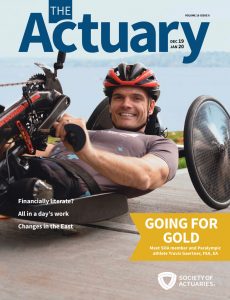
Yes. That is a huge role and I have made significant gains since moving over to Tonal. Part of that is for paracycling, you are looking at trying to have power. Everything is measured by wattage. Your wattage for a certain time. It’s all about that power. Not necessarily about building a bulk, but I’m trying to build up power. With functions like the chains function on Tonal, for example, or the way the general digital weights have worked, I can push on that to get explosive power and the concentric movement. For example, you try that with cables at a gym, you are going to toss those things up in the air and then you got to grab them at the end, or even with weights, for example, it’s hard to get that explosive power. Tonal works very well for focusing on the concentric and pushing out with explosive power. We have been able to put some nice custom workouts together to work on that specifically.
Are other para-athletes using Tonal or is this your little secret? You are not telling anybody.
It was my little secret. I was trying to keep it a secret as long as I could, but the cat’s out of the bag a little bit. There are a few others, friends of mine on the team. I have been so excited about it that I can’t stop talking about it. They see that. There are a few others on the team now that do have one. One of the coaches actually has one now as well. The word is out. Luckily, it’s out domestically. Tonal can keep that whole, no international shipping thing to its state, that would be fantastic.
That amuses me. I’ve never heard such a good rationale for not shipping overseas.
Yeah, sorry.
The next time somebody complains about no international shipping, we’d just be like, “America.”
Absolutely, USA.
I was going to be like, “Why do you hate America?” I’m like, “Because they are Canadian.” It’s not going to resonate with them at all.
Tom, stop. You are going to start an international incident. How do you find the time to balance working on getting stronger with working on your power versus the time doing the cycling? How do you make all that work?
When I did it before, I wasn’t working yet or just started my professional career in my second Paralympic journey. I wasn’t married. I was single. I would hate to say it was easy because it was not. Now balancing being a father of three with having a full-time corporate job and getting in the hours that most professional athletes get in, it’s much more of a focus on efficiency during my day. Nutrition and recovery have become so much more important. Daily recovery whether it’s having a massage with a Theragun, whether it is foam rolling or going in to get a massage once a week versus getting the right amount of sleep, and being diligent about that. I have had to work more on that balance, waking up in the morning, sitting down and doing what gets me focused, which is sitting down and doing a Bible study, and getting my mind focused on where I want it to get focused on.
Throughout the day, I have to be efficient. If I’m going to work and be able to get my second workout in on the Tonal, then I need to work through my day job in an efficient way, so that I’m able to show up and do that. Be at the table with the kids and be present with the family at night. I’m much more focused on efficiency in my general life and then placing the Tonal within the actual workout schedule. I have my cycling coach in contact with my Tonal coach, which is Coach Nicolette. She does my custom builds every month. Those two talk and they talk to make sure that we are designing. The periodization that Coach Nicolette puts together is in tune with what my cycling coach does.
Even within the week, it’s making sure that I’m only focusing on either a high-intensity interval training or Tonal. On the days I do high-intensity interval training on the bike, I’m not on the Tonal. The next day in between high-intensity interval training, I’m on Tonal when I’m just doing maybe an hour and a half endurance work, for example. That will be my Tonal day and then the same thing, as we go throughout the week, alternating those two things. It is a balance. We worked through it quite well.
How many hours a week are you training?
Depending on the cycle of the season, 12 to 14 hours a week.
What Tonal has done for the disabled community is it opened up a world of new exercises. Share on XThat is a lot.
You decide to go back to be a Paralympian again and you are doing all this extra workout time. Once you got a lot of workouts under your belt, you are back in shape. Did your wife come around? Was she like, “Now I’m on board?”
She is an absolute saint. She has to take on a lot of extra work obviously with the three kids if I’m traveling with the team. My employer has been super supportive. I used to travel probably I was averaging 100 flights a year for work. When I wanted to get into this, I needed to be relaxed if I’m going to get my training in. My employer came around and was super helpful and that my wife was very grateful for that. She reduced my travel schedule by a lot to allow me to be at home more with the family. That gave her a better balance with being able to cut back on work a little bit while still getting support from my employer and be around with the family. We are making it work. Everybody is coming together to try and get the right level of support. You can’t do this thing alone.
I was going to ask about your employer because there is clearly a lot of travel associated with it. When you go to Tokyo to compete, knock wood, that you get to. I don’t want to jinx it. How long would you have to be gone for a trip like that? That is not like two nights.
That one is going to be tough. We would stage beforehand in the US somewhere very hot because Tokyo is going to be hot and humid. We would do two weeks of heat acclimation in the US in August, then we would come home for a week, and then we would go to Tokyo probably for hopefully only three weeks. There are going to be some COVID restrictions that aren’t completely defined yet in terms of how early we need to be there to quarantine. I’m hoping it’s no more than three weeks because even three weeks can be very difficult on the family. I have to do that.
I’m curious about the heat acclimation thing. If you go somewhere to acclimate for two weeks and then you come home for a week, won’t you then be unacclimated?
No. We have a physiologist in the team that I talk to and they’re helping us with the broader team efforts as well. Once you do that for a good period of time and you’re acclimated, from there, you can do one or two sessions a week to maintain it. It doesn’t go away. They’ve done a lot of studies on this. If I do two weeks of it and I come home, as long as I have one or two sessions in that week before I go to Tokyo, I’m not going to lose any of that acclamation. It’s interesting. It has nothing to do with the heat in your general day. It has to do with the heat, you’re building up your core body temperature to a certain temperature in an actual workout setting. You build it up. You hold it for whatever it is, 60 minutes or so, and then that is when your body adapts and then you want to cool down as fast as possible.
That is so counter-intuitive. I never would have guessed that. It doesn’t seem like it would make sense. I know there are scientists saying the other thing, but I’m going to choose not to believe it. That is what we do now.
Do you have to worry about your humidity though during that week you are at home? When you are doing that workout, do you have to keep the humidity at a certain level?
That will be part of it, too. Tokyo is going to be a mess and then there’s going into that as well as your cooling strategy. Even months before Tokyo, we will work on our cooling strategy because not everybody cools the same way, whether it’s a cooling vest, ice slushies, all those types of things that we are going to have to figure out how my body responds best to. When we get to Tokyo, when we are warming up, getting ready for races, we want to work on that cooling as well.
You have to do sensory acclimation. They are installing 400 flat screens in his home to constantly look like Tokyo.
Can you even get that? I haven’t been to Tokyo for many years. I went there for a basketball tournament once and that was it was like then. You can imagine what it’s like now.
All I know about Tokyo is what I see in anime.
It’s got to be the same?
That seems legit, like that YouTube fellow that talks about science.
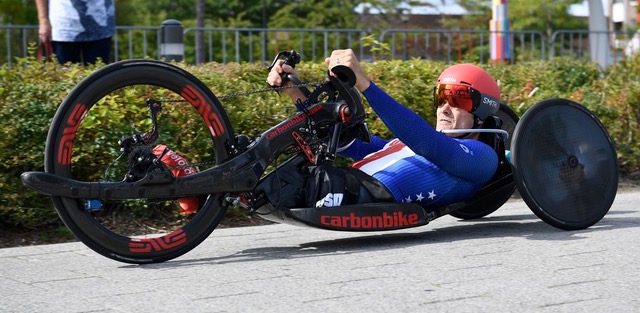
What is your absolute favorite feature on the Tonal?
My absolute favorite feature on the Tonal is definitely the smart buttons because that gets me into new positions. It’s getting me to do things like core exercises. I could never do core exercises. I didn’t have the balance to pull pulleys around to get into spots. I’m working muscle groups that I couldn’t even work before. To me, it’s been fantastic and so exciting. I love the AI as well. I don’t have to put my weights. That gets tiring. I tried so many apps in the gym to say, “What do I need to lift this day and how do I feel?” You get stuck because you don’t remember what you did or you don’t want to go up a full 5 pounds, whereas Tonal the AI is going to increase me by 1 pound. Let’s do this. That helps you from getting stuck in those ruts. I love that. That is probably my second most favorite feature. It’s tracking my weight for me and it’s moving me up in small increments so that I can get off of those plateaus a lot faster.
I have to say that is absolutely vindicating to hear somebody at your level say that. Somebody is fit and works out as much as you do because we say that all the time but there are people that are a little skeptical of it. They have worked out in the gym. They are heavy body weightlifters or whatever. They are like, “It’s not that big of a deal.” To hear somebody at your level, with the strength that you have say, “I don’t want to write it all down.” I feel very vindicated.
It’s so much work. I went from a workout to a homework out.
All those pieces of paper everywhere. You got to pull up the app and if you forget to put it in, forget about it. It’s going to mess everything.
I love how this piece of equipment allows you to do something that you weren’t able to do before. This is going to sound weird. This interview reminds me of, we have another podcast called the Clip Out, which is similar to this but about Peloton. In one of our earliest interviews, we interviewed a woman who was an Orthodox Jew. One of the things that she enjoyed about Peloton is that their modesty restrictions, if she goes to the gym, if it’s co-ed, she had to be covered head to toe, and that is an awful way to exercise. It’s this unintended consequence of the Peloton that you can do it at home. I feel like Tonal is in the same boat. I don’t think when they built it, that they were probably like, “This will help Paralympians,” but here is this amazing intended consequence of this device. It’s not a question. It felt interesting.
It is exciting to see. Can you explain maybe one of the exercises that you do that is custom that you wouldn’t have been able to do? I know you gave a couple of examples, but for people who are like thinking about the Tonal and they can’t quite visualize being able to customize a move exactly for them. I’m looking for a visual, does that help?
Things like core, for example, where I’m pulling on that pulley somehow. For me before, I would have to carry the weight over and getting into that position wouldn’t work. We do a lot of other things too, based on my body not having lower limbs. For example, when I’m doing a seated row, I can’t because I don’t have half a leg. It’s not efficient for me and my body to be pushing up with just my half leg and have all that weight. All your weight is on one side, it’s asymmetric and that is limiting how much I’m using both sides of my lower back. Coach Nicolette and I have this bench back here that you can get on the incline. Basically, I lie on the incline with my forehead like this and reach down and grab the Tonal handles from the ground. I’m able to do the seated row, where I’m not getting all of that inefficiency and asymmetry going on in how the muscles are being worked.
Who susses that out of what makes the most sense? Is that something you come up with, Nicolette, or is there a third party?
I came up with some of it, but most of it I was in a rut too, after using Tonal myself without a coach for 6 or 9 months. I heard Coach Nicolette on I think it was a Tonal talk or something like that and I said, “She is really creative. She is thinking about things that I don’t think about. Maybe I need to have a conversation with her.” She was very quick. We did that initial video assessment. She could tell what I can and can’t do, and where my limits might be. She was very quick to come up with exercises that I haven’t thought of at all, that is definitely not on a Tonal screen because I’m doing it much differently. She was able to leverage her knowledge of Tonal and what my limits were as somebody with a disability to tweak a lot of the exercises in a way that would allow me to do them properly.
It’s going to be a little intimidating to tweak these exercises on your own because if you don’t have that background in physical training, you could hurt yourself.
I did a few of them, but not enough for me to have the number of exercises I needed to stay fresh and she got me there.
It’s very inspiring too to be able to use the Tonal in a whole different way. It opens up a lot of possibilities.
It does. The intent wasn’t, maybe it was, but I’m guessing it wasn’t for people with disabilities. What it has done for the disabled community and para-athletes has opened up a world, a world of new exercises and a world of new things we can do.
Do you do any programs or workouts that are already made? I’m guessing the answer is no because you need to be able to customize it.
The answer is no. I’m sure that you could leverage some of them, but you would have to skip something here or there, or on the fly like you said, be able to adapt and that will give you a counter-intuitive wanting to get through these workouts efficiently, so I have to be more thoughtful about how to adapt and advance.
Do you use any of the other content that is on Tonal?
Yeah. Some of the workouts for the kids, we get them involved for sure, especially during COVID and Seattle where it was raining for so long.
There is your virtual PE.
We didn’t get them outside. Some of those programs are fantastic and the kids love them. That was a good way to keep them active too in a different way.
How old are your kids?
We have 3, 6, and 9.
Very symmetrical.
It is somewhat symmetrical.
I don’t think that’s what they mean by the Rhythm Method.
That’s it Three, six, nine. There’s no more zero.
Do you have any advice for people who are new to exercise or new to Tonal?
The Tonal community is fantastic. I’m glad that it’s there because that gives people who are trying to figure out if it’s right for them. The audience of people that they can ask questions to and obviously, the community is so fantastic that everybody jumps in and helps answer those questions and encourages people along. It’s a very encouraging community as well. My best advice is it is easier to use than you think and it’s going to be more beneficial. A lot of people start to wonder, “Is it going to replace what I have at the gym?” For me, more so, again given my situation, I can do more now than I could when I went to the gym.
A lot of other people would say something similar like they don’t feel like they are going to be lacking something that they had in a gym with 40, 50, 60 different types of machines. It can meet you where you are regardless of where you are in your physical fitness journey. If it’s beginners, there is great beginner stuff in there and it will help you move along the way you want to. If you are more advanced and you want to push it, there’s that, too. It does fit a wide variety of users.
Tonal can meet you where you are regardless of where you are in your physical fitness journey. Share on XThank you so much for taking time out of your day to join us. Before we go, is there somewhere that someone can follow you online for social media so they can see if you make it?
We want to follow your journey. We want to know what is going to go on.
Yes, please. I would encourage you to do so because the more people that follow, the more sponsors see that, and they know that you are out there. I try to do as much as I can posting about my journey and the best place to do it is on Instagram. My handle is @Travis.Gaertner. I post a fair bit especially when I’m traveling and I’m preparing for main events. That is probably the best way.
Tell us when you are going to Minneapolis. When is it going to be?
The race is on the 19th. I’m leaving on the 14th of June.
We are going to be thinking about you. We will be watching your Instagram to see how this all turns out. We are rooting for you.
I appreciate that.
Thank you so much for joining us. We appreciate it.
Yes, we do.
Thank you for having me. It was a great time.
Thank you.
—
I guess that brings this episode to a close. Until next time, where can people find you?
People can find me on Facebook at Facebook.com/crystaldokeefe. They can find me on Instagram or Twitter at @ClipOutCrystal.
You can find me on Twitter @RogerQBert or Facebook at Facebook.com/tomokeefe. You can find the show online at Facebook.com/supersetpodcast. While you’re there, like the page and join the group. Be sure o subscribe to us wherever you get your podcasts from. That’s it for this one. Thanks for tuning in. Until next time, keep lifting. You can watch all of these on our YouTube channel at YouTube.com/theclipout. That’s it for this one. Thanks for tuning in. Until next time keep lifting.
Important Links:
- Travis Gaertner
- @Travis.Gaertner – Instagram
- Apple Podcasts – The Superset Podcast
- Google Podcasts – The Superset Podcast
- Spotify – The Superset Podcast
- Facebook.com/supersetpodcast
- YouTube.com/theclipout
- Facebook.com/crystaldokeefe
- Instagram – Crystal O’Keefe
- @ClipOutCrystal – Twitter
- @RogerQBert – Twitter
- Facebook.com/tomokeefe
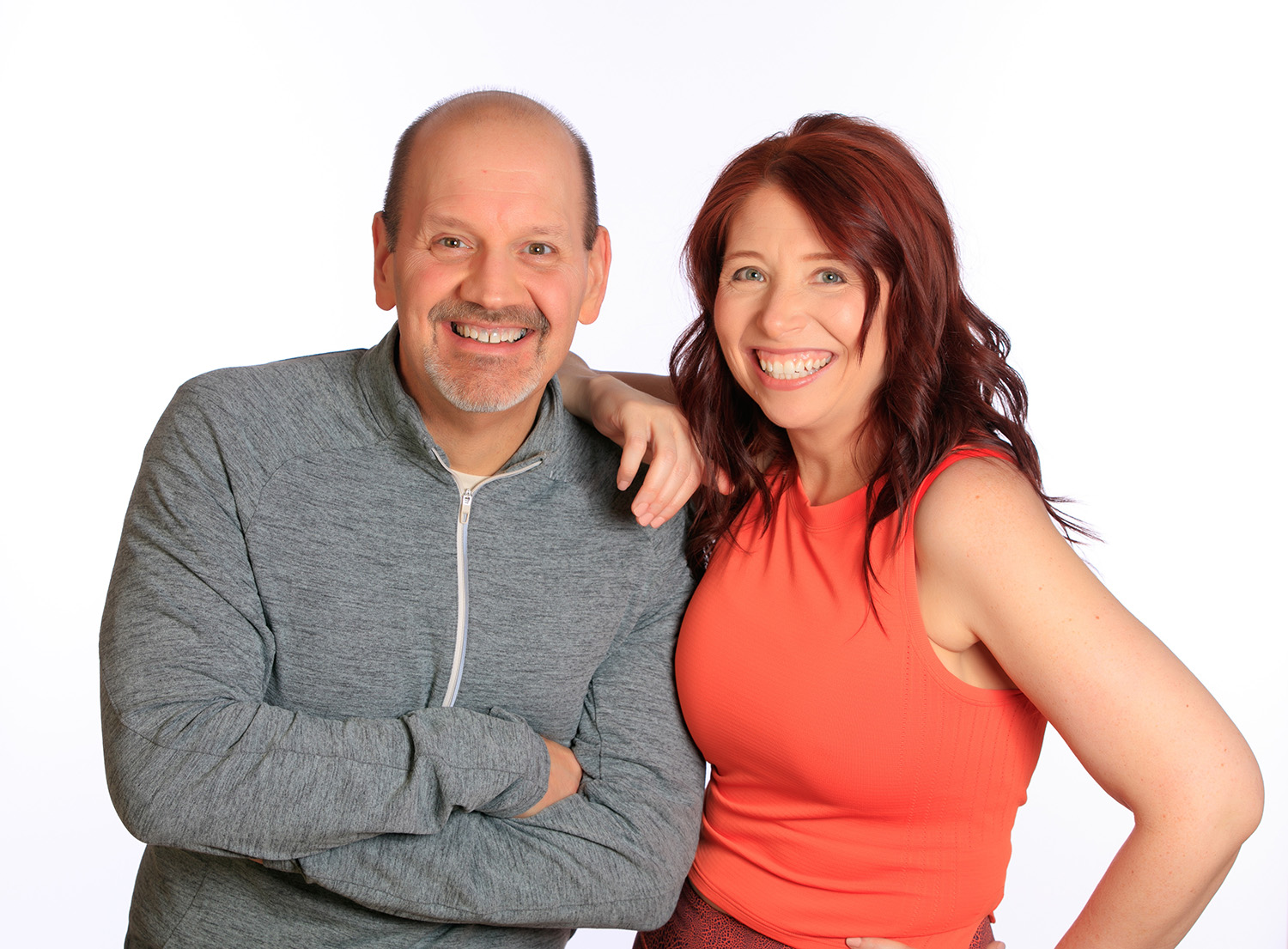
Subscribe
Keep up with all the Peloton news!
